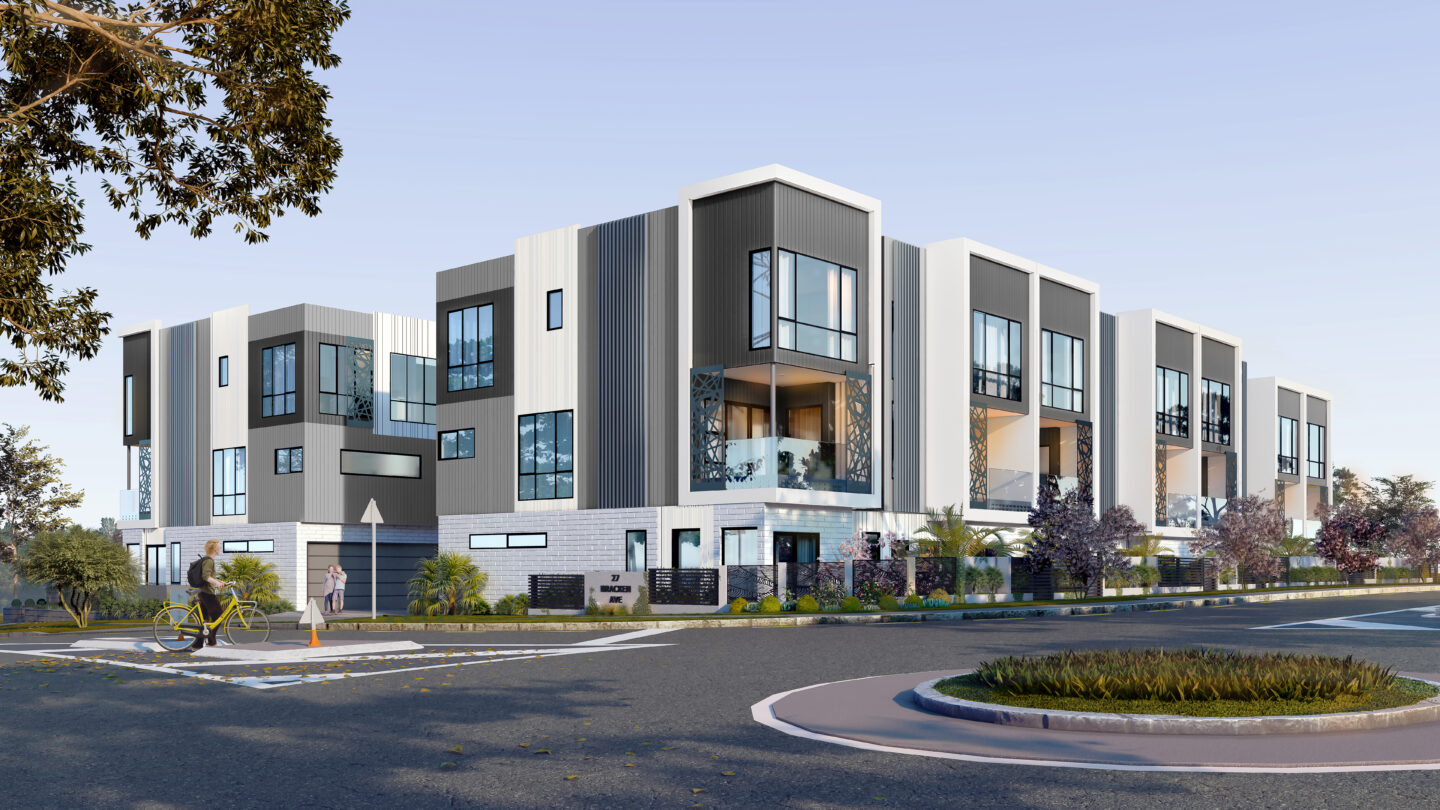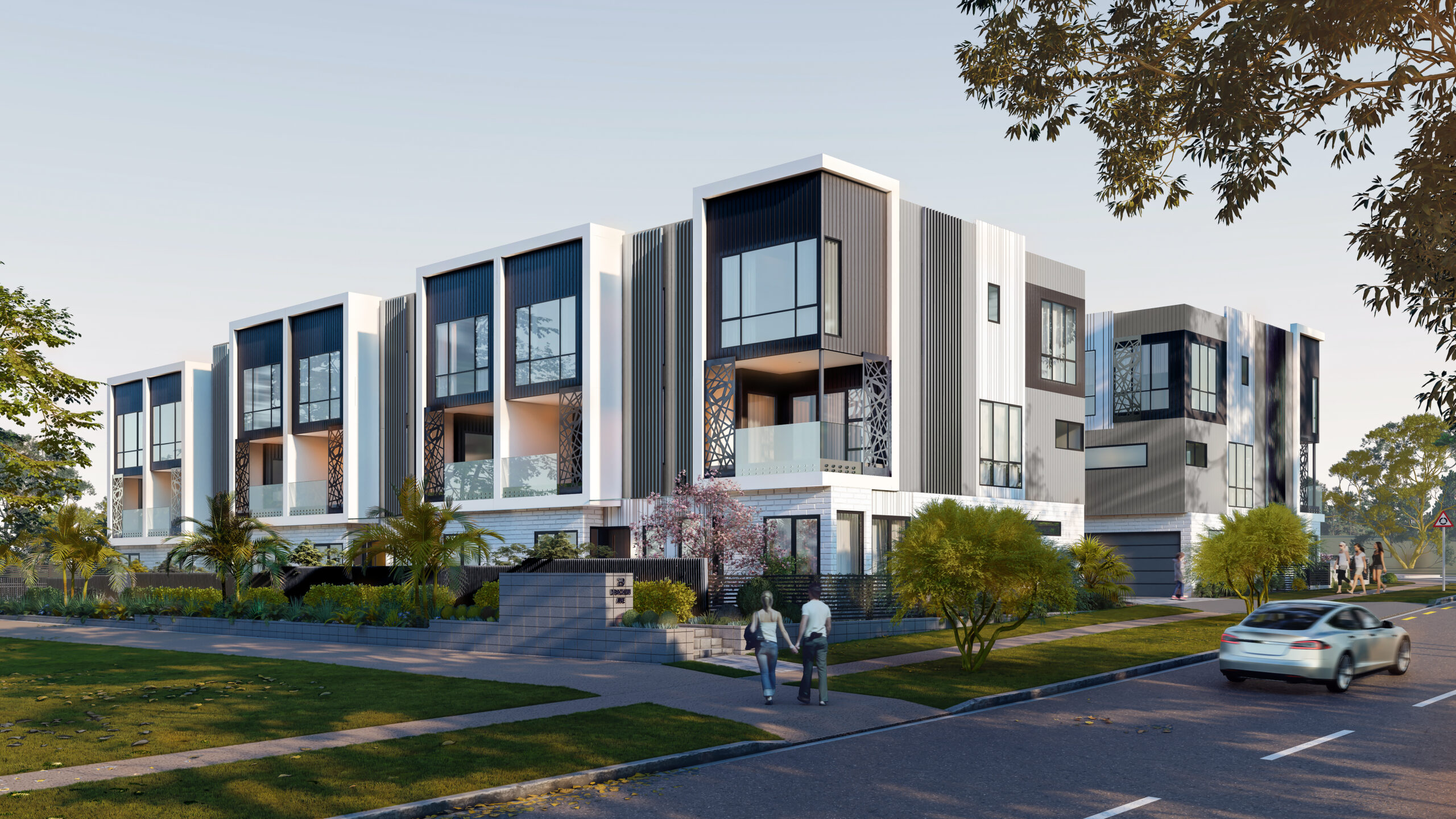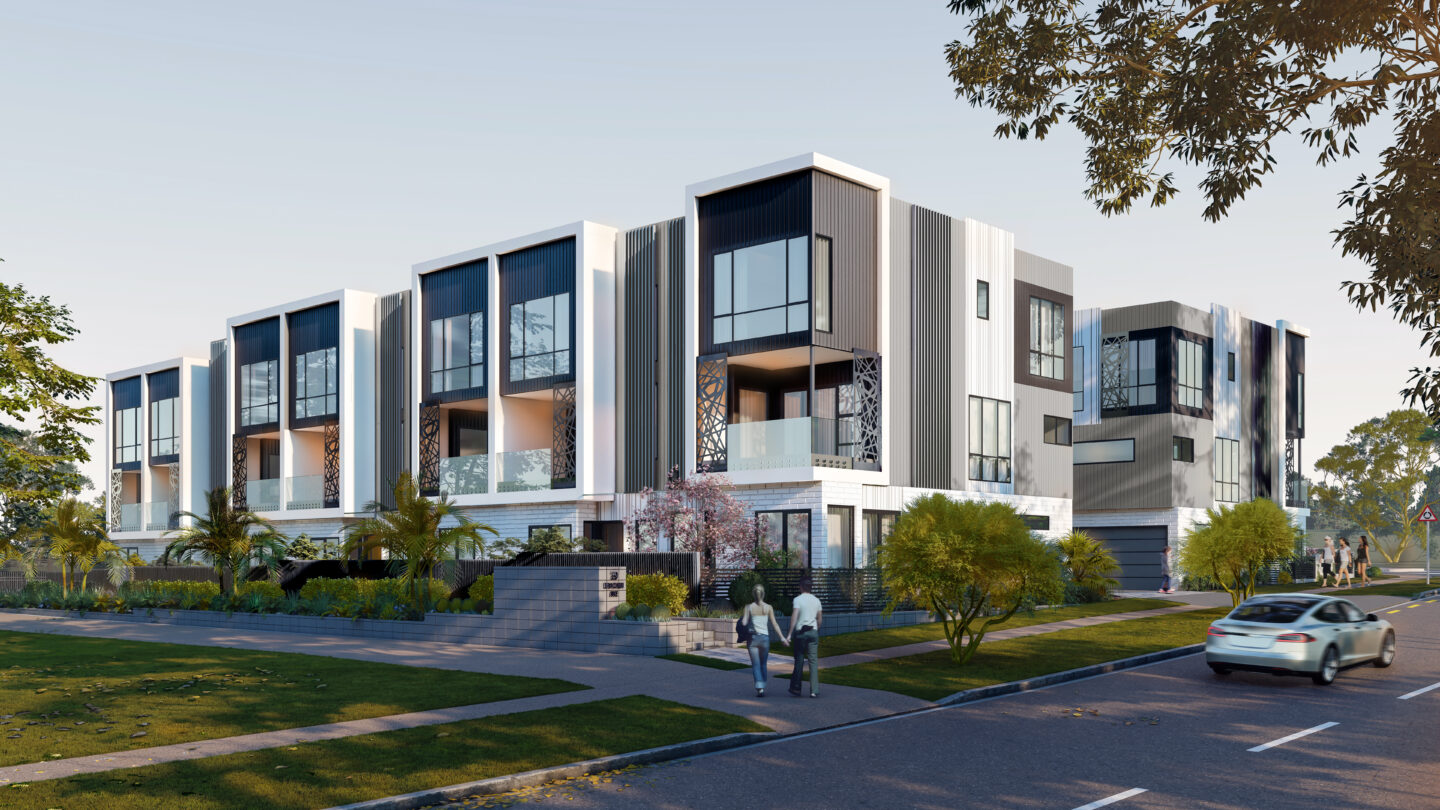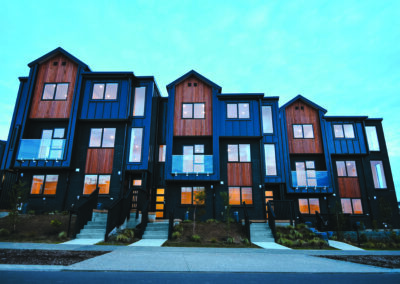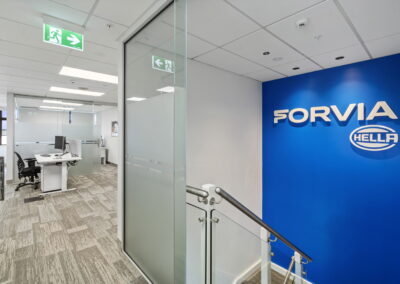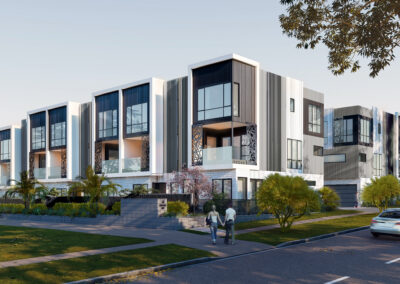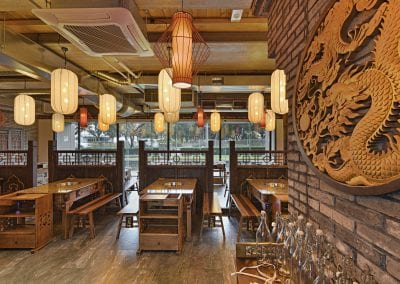Overview
With recent changes to the Auckland Unitary Plan allowing more mid-density residential development, there has been significant growth in the amount of terraced housing being built. One such development is 27/29 Bracken Avenue, a modern, high-quality residential complex by architects North Island Design. It is situated in the heart of Takapuna, a popular seaside suburb on Auckland’s North Shore. Built with simplicity in mind, it is clad in a mixture of brick and vertical shiplap, with contrasting patterned feature screens.
The Design Fire was engaged to provide fire engineering for this project, especially passive fire protection, which has become a growing area of focus for us due to the increasing popularity of terraced housing developments.
Solution
One of the most important aspects of terraced housing design is the intertenancy wall – the wall that prevents fire spreading from one unit to another. A popular product for this purpose is the GIB Barrierline system, which not only achieves post-fire stability in tricky situations like parapet walls and wing walls, but also offers great acoustic insulation.
While we originally specified GIB Barrierline for 27/29 Bracken Avenue, COVID-related supply issues meant we needed to find an alternative solution. We chose Resene INTEGRA, a lightweight concrete intertenancy system, which offers similar levels of performance to GIB Barrierline. The walls are double-framed, and while fire separation is achieved at the centre barrier, the timber frame also needs to be fire rated if it supports a fire-rated mid-floor or roof. The gaps between the timber frame and centre barrier also need to be fire stopped with something like mineral wool, to prevent fire spreading to non-fire-rated walls.
Another important design consideration in terraced housing is overhanging floors, which are a popular way to provide extra space on upper levels. These features require fire rating in the soffit area. However, if the fire load only applies from the neighbouring unit, the internal support structure may not need to be fire rated. It’s in situations like this where engaging a specialist fire engineer can save a developer extra work and money.
Cladding is another feature that requires careful attention from a fire engineer. Most current cladding systems require a 20mm cavity in which fire could potentially spread. Therefore, cavity fire stopping systems like Ryanmesh or Rainbar will need to be installed in the cavity at the overhang fire rated soffit.
In Detail
There are many situations where fire stopping is required, and it is often not clear just by looking at the generic specification of fire stopping solutions. That’s why we recommend engaging fire engineering specialists to provide project-specific advice, which will ultimately save a developer time and money and reduce the risk of making errors in the building’s fire protection systems.
YOUR DESIGN DELIVERED – PROCESS SIMPLIFIED.
Are you currently planning a building project like this?
Start by requesting a Feasibility Report
